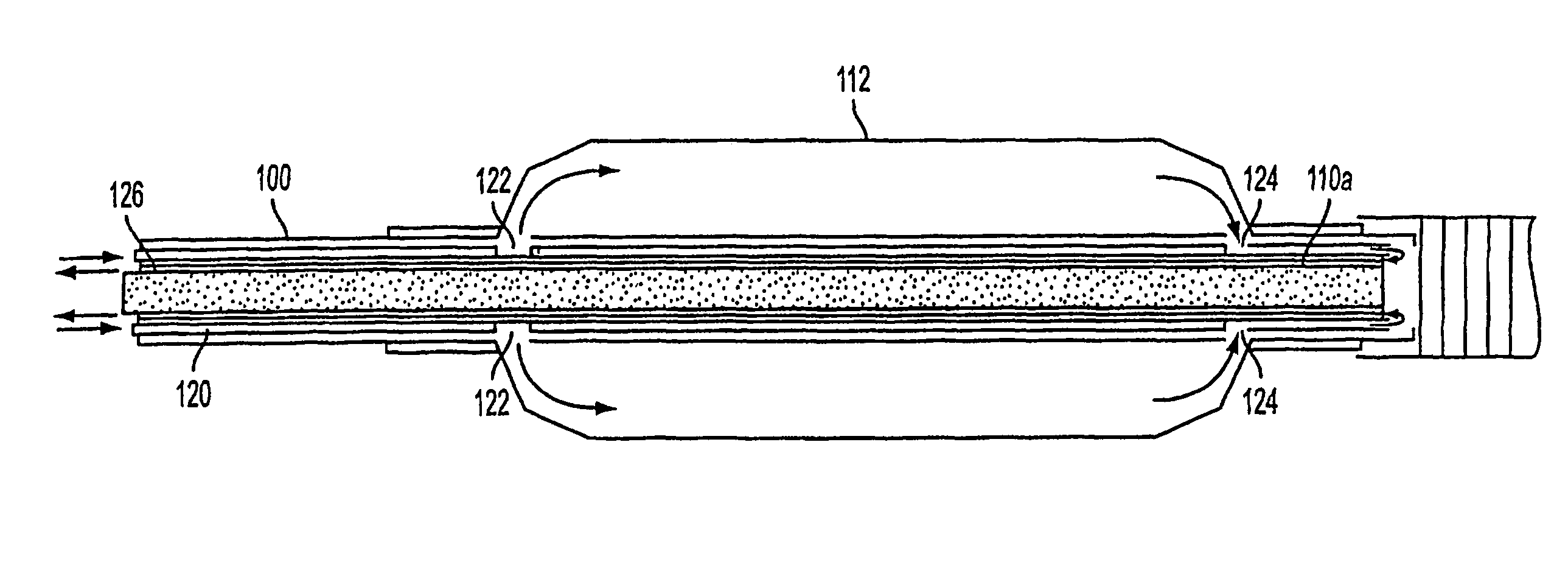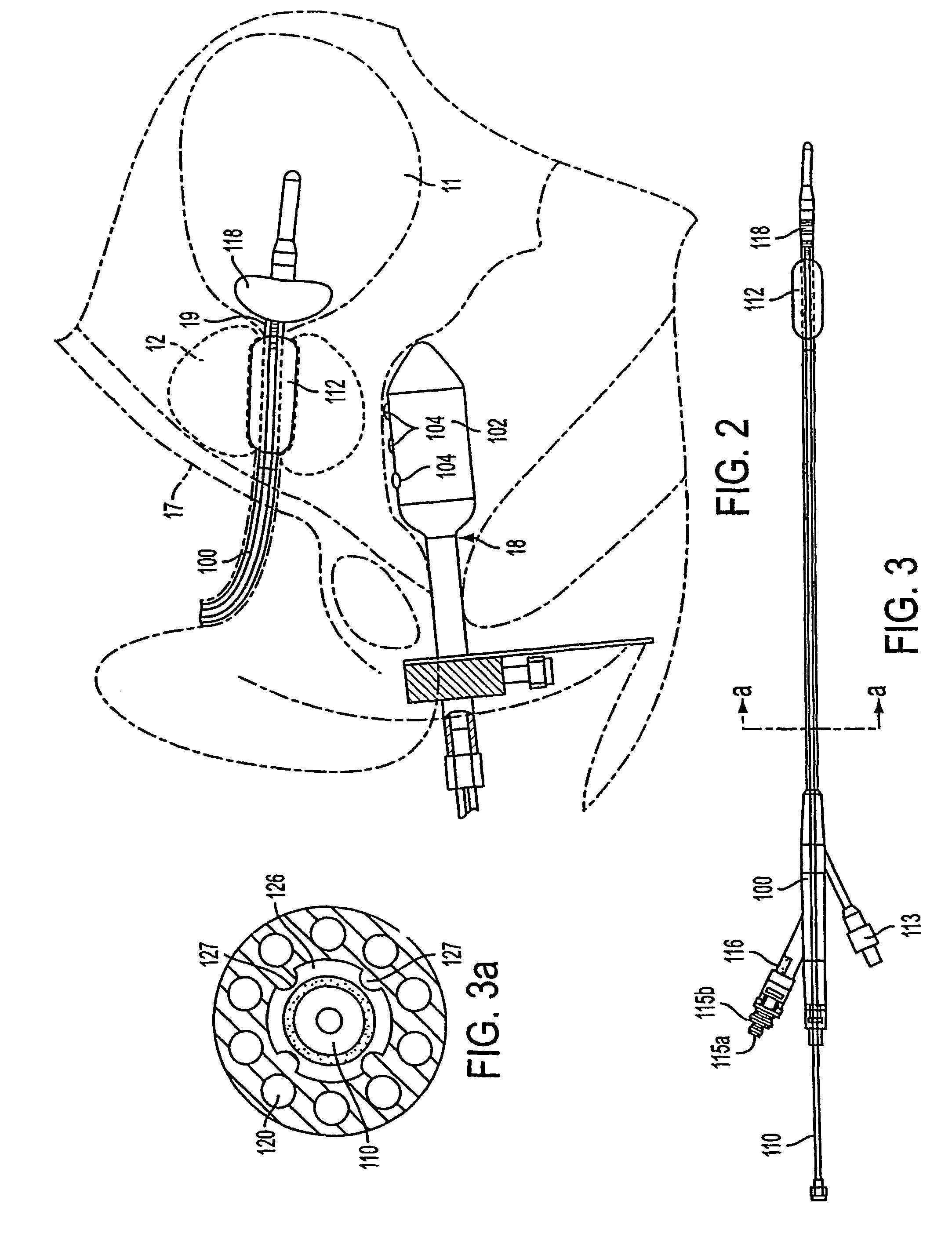Method and apparatus treating tissue adjacent a bodily conduit with thermocompression and drugs
a tissue and thermocompression technology, applied in the field of methods and apparatus treating tissue adjacent to a bodily conduit with thermocompression and drugs, can solve the problems of thermal damage to the tumorous prostate tissue, increased urinary frequency, urgency, etc., and achieves the effect of improving urine flow, efficient heat transfer, and long-term efficacy of treatmen
- Summary
- Abstract
- Description
- Claims
- Application Information
AI Technical Summary
Benefits of technology
Problems solved by technology
Method used
Image
Examples
Embodiment Construction
[0032]The present invention is directed to a device and a method for thermally treating tissue adjacent a bodily conduit, such as a urethra, while preventing obstructions of the bodily conduit due to edema. In addition to focused energy and compression, drug delivery may aid in long term efficacy of treatment. The following will describe method, systems and alternatives of the method and apparatus according to the present invention.
[0033]A first method and apparatus of maintaining or expanding the diameter of the urethra into a selected urethral shape after microwave thermotherapy treatment for benign prostatic hyperplasia to restore patency to the urethra is illustrated in FIGS. 1-6. FIG. 1 is a vertical sectional view of a male pelvic region showing the effect of benign prostatic hyperplasia (BPH) on the urinary organs. Urethra 10 is a duct leading from bladder 11, through prostate 12 and out orifice 13 of penis end 14. Benign tumorous tissue growth within prostate 12 around ureth...
PUM
 Login to View More
Login to View More Abstract
Description
Claims
Application Information
 Login to View More
Login to View More - R&D
- Intellectual Property
- Life Sciences
- Materials
- Tech Scout
- Unparalleled Data Quality
- Higher Quality Content
- 60% Fewer Hallucinations
Browse by: Latest US Patents, China's latest patents, Technical Efficacy Thesaurus, Application Domain, Technology Topic, Popular Technical Reports.
© 2025 PatSnap. All rights reserved.Legal|Privacy policy|Modern Slavery Act Transparency Statement|Sitemap|About US| Contact US: help@patsnap.com



